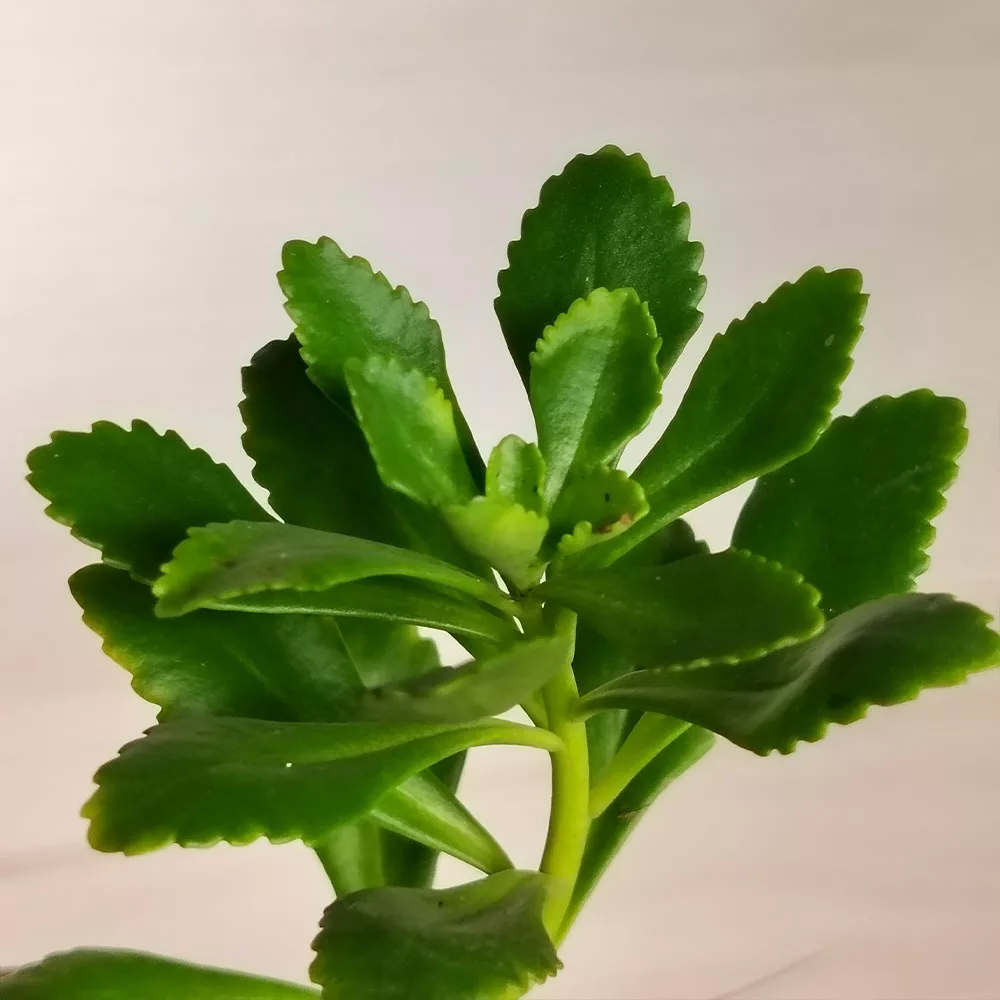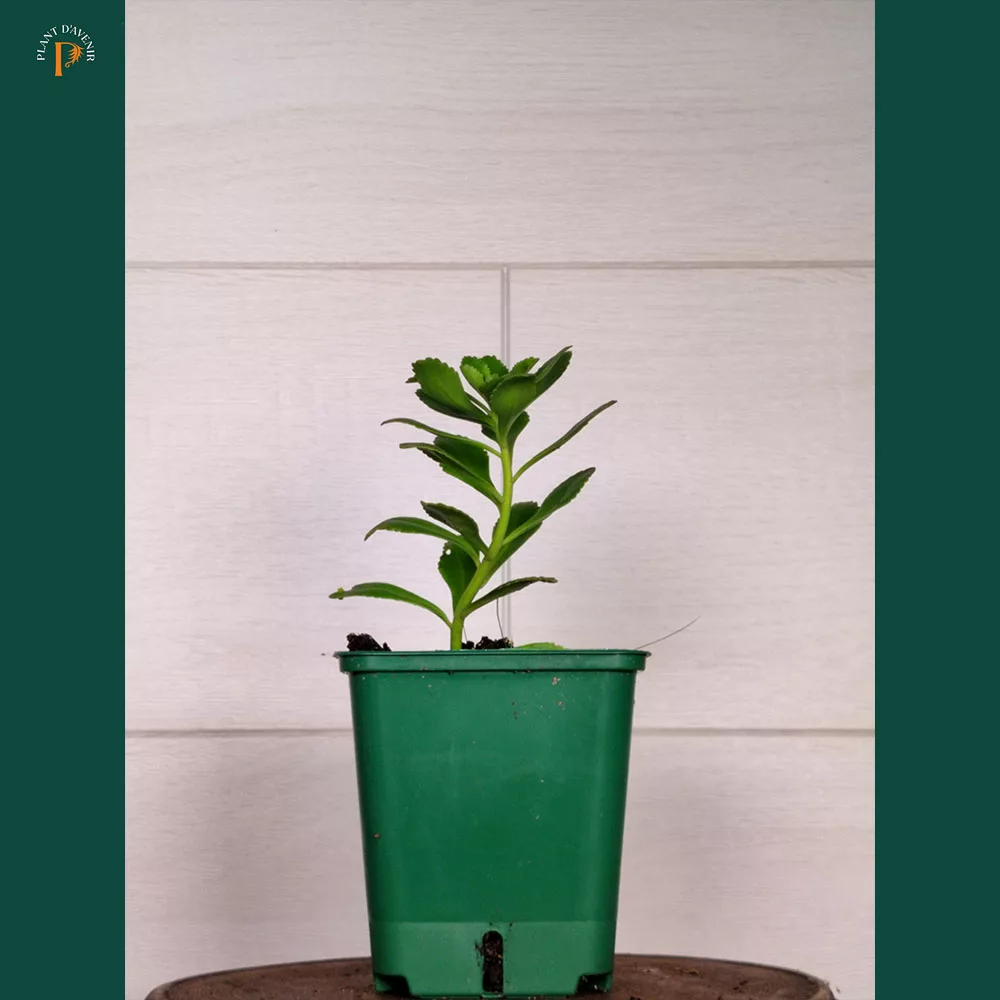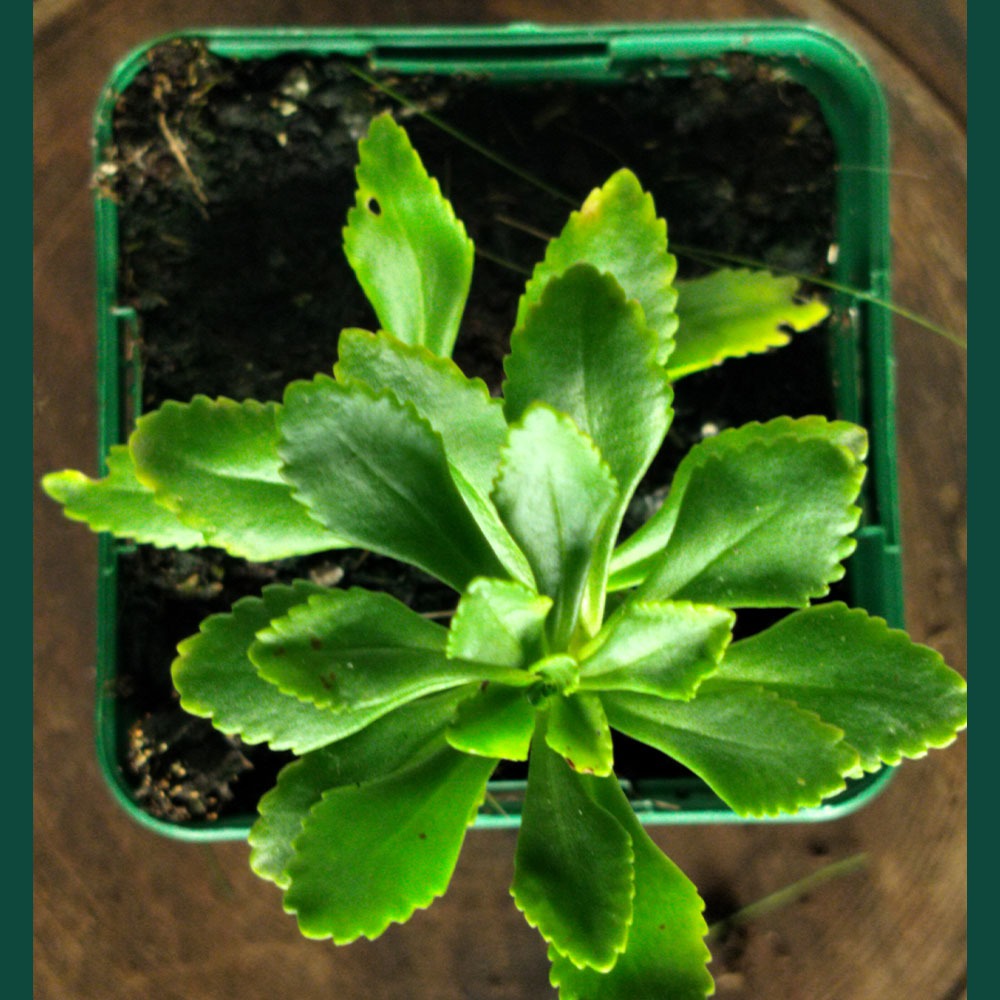No products in the cart.
Sedum “Weihenstephaner Gold”
A low-growing sedum with a thick, dependable dark-bronze/green foliage and prolific flowering cycle.
Rated 0 out of 5
0 customer reviews
4,90 €
Only 20 item(s) left in stock!
Category: Balcony-Friendly, Bees and Butterflies, Evergreen, Frost Hardy, Ground Cover

Sedum "Weihenstephaner Gold"
4,90 €
Only 20 item(s) left in stock!
Sedum ‘Weihenstephaner Gold’ is a low-growing, drought tolerant sedum with a thick, dependable dark-bronze/green foliage and prolific flowering cycle.
The flowers appear twice over the flowering season, taking the form of golden yellow stars with pinkish orange overtones which are adored by many pollinating insects.
As the flowers begin to transform into small fruits, the stems and foliage will begin to take on a reddish hue, becoming a bordeaux/puple towards the beginning of winter.
As a ground cover, as a creeping plant between bushes, as a bright low-maintenance windowbox – the Orange Stonecrop is at your service!
👨🌾GARDENING TIPS👨🌾:
-
Perfect for rock gardens, alpine gardens, container planting, hanging baskets, or mixed succulent displays.
-
Combines beautifully with other Sedum species, Sempervivum, and Crassula for textured succulent arrangements.
-
Minimal maintenance is required, with occasional pruning to maintain shape and remove spent flower stems.
Learn more about caring for your Sedum:
The Tales & The Botany: Sedum kamtchaticum var floriferum “Weihenstephaner Gold”
Officially, the cultivar is named after an agricultual college in Germany.
However!
There is another tale that says that it was named after a German beer that has the same color as the flowers of this Sedum. Either way, all roads here lead to Germany.
🌸 Floral Morphology: Sedum kamtchaticum var floriferum “Weihenstephaner Gold”
This variety of sedum stands out for its bright golden-yellow star-shaped flowers, grouped in dense umbels at the tips of the stems.
Blooming from late spring through late summer, it creates a brilliant, pollinator-friendly carpet highly attractive to bees and other insects.
The oval to spatulate leaves, slightly toothed, form a dense, ground-hugging mat that stays ornamental even outside the flowering period.
The combination of its vivid green foliage (which takes on bronze tones in autumn) and its golden blooms makes it an excellent choice for borders, rock gardens, and dry beds.
🧬 Reproductive Biology
Pollination is primarily entomophilous, attracting bees and other small insects. Sedum propagates easily through leaf cuttings or stem offsets, allowing rapid vegetative reproduction.
Seeds are produced in small capsules but vegetative propagation is far more common in cultivation.
The plant exhibits Crassulacean Acid Metabolism (CAM), opening stomata at night to conserve water while allowing photosynthesis during the day.
🦋 Ecology & Cultivation
Sedum thrive in well-drained, sandy or rocky soils under full sun, although it tolerates light shade.
It is drought-tolerant, frost-sensitive, and well-suited for rock gardens, containers, or as ground cover.
The plant is low-maintenance, requires minimal watering, and benefits from occasional pruning to remove damaged or overgrown stems.
Its vibrant leaf colors and compact growth habit make it popular for ornamental gardening and succulent collections.
Other names:
Orange Stonecrop
Orpin Russe
Orpin Jaune
Origin:
Kamtchatka, Siberia
| Weight | 0,5 kg |
|---|---|
| Flowering | June, July, August, September |
| Soil | Loam, Dry, Sandy, Well-Draining |
| Exposure | Full Sun |
| Frost Tolerance | -25°C to -30°C |
| Size | 0.2m H x 0.5m W |
Reviews
0
Rated 0 out of 5
0 customer reviews
5
0
4
0
3
0
2
0
1
0
Only logged in customers who have purchased this product may leave a review.
Related Products
Vinca minor
Looping elegance and ability to form a low flowering ground cover
Looping elegance and ability to form a low flowering ground cover
Rated 0 out of 5
Euphorbia myrsinites
Known for its draping form of silver-gray foliage and radiant blooms.
Known for its draping form of silver-gray foliage and radiant blooms.
Rated 0 out of 5
Tanacetum densum subsp amani
A shrublet composed of soft, finely divided silvery gray-white leaves.
A shrublet composed of soft, finely divided silvery gray-white leaves.
Rated 0 out of 5
Mentha x piperita ‘Chartreuse’
A spicy mint, known for its use in the production of liqueurs and herbal teas.
A spicy mint, known for its use in the production of liqueurs and herbal teas.
Rated 0 out of 5
Euphorbia cyparissias Clarice Howard
A Euphorbia that resembles a soft little cyprus tree
A Euphorbia that resembles a soft little cyprus tree
Rated 0 out of 5
Echinacea purpurea
A perennial with purple flowers all summer long
A perennial with purple flowers all summer long
Rated 0 out of 5
Hieracium maculatum Leopard
A native perennial with blue-green leaves and a tall yellow flower
A native perennial with blue-green leaves and a tall yellow flower
Rated 0 out of 5
Melissa officinalis
A perennial plant in the mint family that is adored by bees, royal families and tea drinkers.
A perennial plant in the mint family that is adored by bees, royal families and tea drinkers.
Rated 0 out of 5
Kalanchoe daigremontiana
A toothy succulent from Madagascar, known as the Mother of Thousands.
A toothy succulent from Madagascar, known as the Mother of Thousands.
Rated 0 out of 5
Hellebore argutifolius
Winter flowering perennial with marbled blue-green leaves
Winter flowering perennial with marbled blue-green leaves
Rated 0 out of 5
Tradescantia Blushing Bride
Gorgeous blushes of pink and white that appear in the coldest nights.
Gorgeous blushes of pink and white that appear in the coldest nights.
Rated 0 out of 5
Cerastium tomentosum var. columnae
A grey-green spreading ground cover from the mountains.
A grey-green spreading ground cover from the mountains.
Rated 0 out of 5
Stachys byzantina
Silky white-grey leaves and tall striking flowers
Silky white-grey leaves and tall striking flowers
Rated 0 out of 5
Trachelospermum asiaticum ‘Ogon Nishiki’
Jasmine with colorful foliage and lovely white flowers in summer
Jasmine with colorful foliage and lovely white flowers in summer
Rated 0 out of 5
Glechoma hederacea
A sweet smelling ground cover, producing little blue flowers all summer long.
A sweet smelling ground cover, producing little blue flowers all summer long.
Rated 0 out of 5
Erigeron kavinskianus
A daisy-like carpet of flowers
A daisy-like carpet of flowers
Rated 0 out of 5
Sedum album
A low, multi-color ground cover.
A low, multi-color ground cover.
Rated 0 out of 5
Artemisia Valerie Finnis
A semi-evergreen, aromatic variation on the theme of Artemisia.
A semi-evergreen, aromatic variation on the theme of Artemisia.
Rated 0 out of 5
recent view product
Brachyglottis greyi
Soft grey velvety velvety bush covered in bright yellow daisy flowers
Soft grey velvety velvety bush covered in bright yellow daisy flowers
Rated 0 out of 5
Achillea millefolium Terracotta
A flowering perennial known for its flowers that shift in color from bright orange to soft terracotta tones as they age.
A flowering perennial known for its flowers that shift in color from bright orange to soft terracotta tones as they age.
Rated 0 out of 5
Rumex sanguineus
A striking perennial vegetable, known for its tangy spinach taste
A striking perennial vegetable, known for its tangy spinach taste
Rated 0 out of 5
Rosmarinus officinalis
A drought tolerant, aromatic, perennial that is the center of Mediterranean cuisin
A drought tolerant, aromatic, perennial that is the center of Mediterranean cuisin
Rated 0 out of 5
Arabis alpina Grandiflora Rosea
A charming ground cover with lovely pink flowers for rock gardens in the shade.
VENDU PAR 3
A charming ground cover with lovely pink flowers for rock gardens in the shade.
VENDU PAR 3
Rated 0 out of 5



















































There are no reviews yet.